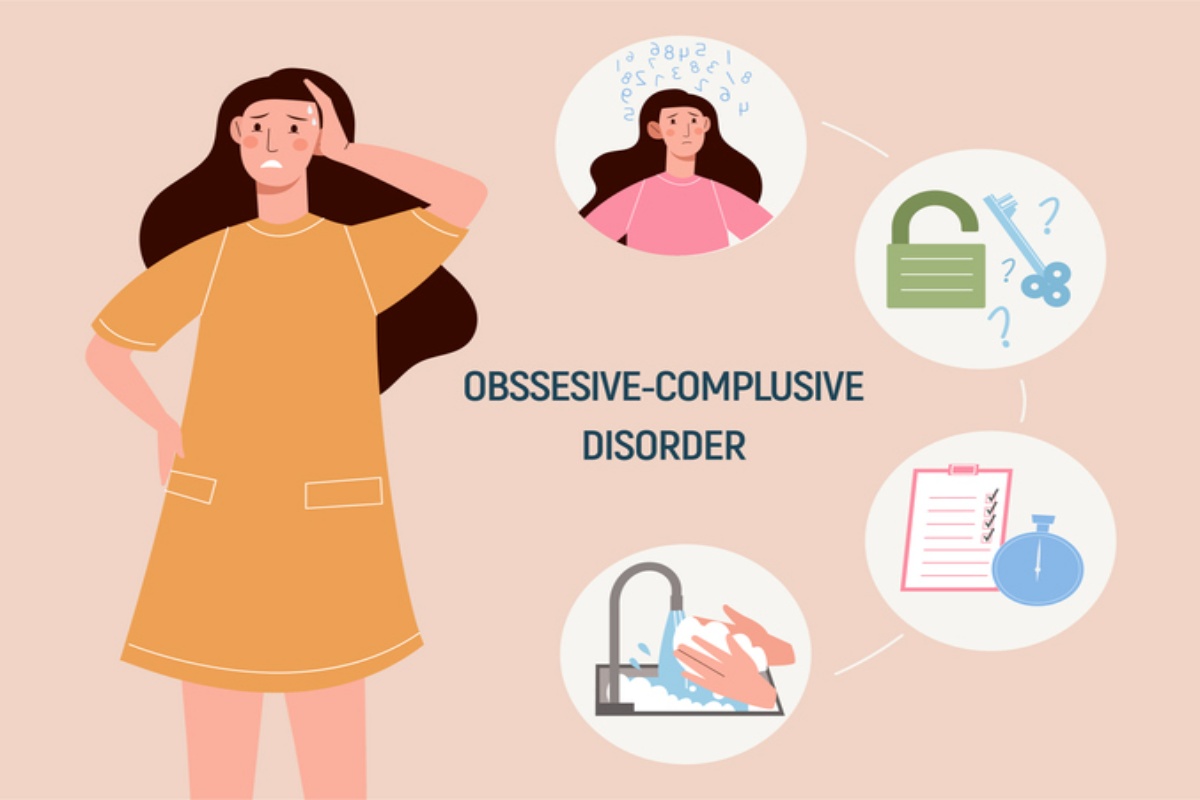Covid-19 can trigger OCD in kids and young people: Study
The study, published in the journal BMC Psychiatry, also shown us that Covid-19 may be associated with adults developing psychiatric disorders.
The behaviors typically prevent or reduce a person’s distress related to an obsession.

OCD. Obsessive compulsive disorder. A woman suffering from obsessive compulsive disorder. Mental health problems. Flat cartoon (Photo:iStock)
Obsessive-compulsive disorder (OCD) features a pattern of unwanted thoughts and fears (obsessions) that lead you to do repetitive actions and think old repetitive thoughts, or make you choose the same behaviour again and again (compulsions). These obsessions and compulsions interfere with daily activities and cause significant distress.
You may try to ignore or stop your obsessions, but that only increases your distress and anxiety. Ultimately, you feel driven to perform compulsive acts to try to ease your stress. Despite efforts to ignore or get rid of bothersome thoughts or urges, they keep coming back. This leads to more ritualistic behavior — the vicious cycle of OCD.
Symptoms Obsession
Advertisement
Obsessions are usually extravagant versions of concerns and worries that most people have at some time. Common obsessions include:
• fear of contamination from germs, dirt, poisons, and other physical and environmental substances
• fear of harm from illness, accidents or death that may occur to oneself or to others. This may include an excessive sense of responsibility for preventing this harm
• intrusive thoughts and images about sex, violence, accidents and other issues
• excessive concern with symmetry, exactness and orderliness
• excessive concerns about illness, religious issues or morality
Symptoms of Compulsions
Compulsions are repetitive behaviors or mental acts that a person feels driven to perform in response to an obsession. The behaviors typically prevent or reduce a person’s distress related to an obsession. Compulsions may be excessive responses that are directly related to an obsession (such as excessive hand washing due to the fear of contamination) or actions that are completely unrelated to the obsession. In the most severe cases, a constant repetition of rituals may fill the day, making a normal routine impossible.
Typical compulsions:
• Excessive or ritualized hand washing, showering, brushing teeth, or toileting
• Repeated cleaning of household objects
• Ordering or arranging things in a particular way
• Repeatedly checking locks, switches, or appliances
• Constantly seeking approval or reassurance
• Repeated counting to a certain number
Treatment
As for each person with OCD, every case is unique and has specific needs.
To determine if you have OCD, a mental health professional will consider several factors. First, your clinician will ask if you are experiencing any of the common obsessions and compulsions associated with OCD. The clinician will also want to know if your obsessions or compulsions are negatively affecting the way you function day-to-day.
Other factors your clinician will consider include other psychiatric conditions you might have, your family history, and any environmental, social, or physical problems you might be having that could contribute to your anxiety.
Working with an OCD specialist or someone well versed in the signs and symptoms of OCD is critical to obtaining a proper diagnosis. After receiving a diagnosis of OCD, you must have a care team that can help craft the proper treatment plan that works for you and your OCD, whether through talk/behavioural therapy, medication, or a combination of treatments.
Behavioral Therapy
Behavioral therapy involves a one-on-one relationship between a patient and a therapist. The most effective approach used to treat anxiety disorders and OCD is cognitive behavior therapy, or CBT. The goal of CBT is to help the patient learn to think and behave differently when they experience fear or anxiety. CBT may also teach social skills. A clinician may recommend specific type of CBT, depending on the diagnosis.
Exposure and Response Prevention
Many patients benefit from a specific type of CBT known as exposure and response prevention therapy, or ERP. This is often referred to as the gold-standard behavioural therapy approach for OCD.
This treatment, which is well supported by research, involves exposing the patient to triggers that cause their anxiety and teaching them to no longer respond to the exposure with rituals or compulsions. A specific treatment plan is created for each individual. ERP should be used with an OCD specialist.
Medication
Several different medications can be used to help relieve the symptoms of OCD. Medication is typically prescribed by a physician or psychiatrist. Examples of medications that may be used to treat OCD include beta-blockers, antidepressants, and anti-anxiety medications.
Stress Management
Research shows that self-care and relaxation techniques may help people with anxiety disorders like OCD to experience fewer symptoms. Examples of stress management techniques include regular exercise, yoga, meditation, and deep breathing. Getting plenty of sleep, focusing on nutrition, and limiting consumption of alcohol and caffeine are also recommended.
Self-help tips for people living with OCD
There are many ways that you can help yourself in addition to seeking therapy. Some suggestions are:
• Refocus your attention (like doing some exercise or playing a computer game). Being able to delay the urge to perform a compulsive behaviour is a positive step.
• Write down obsessive thoughts or worries. This can help identify how repetitive your obsessions are.
• Take care of yourself. Although stress doesn’t cause OCD, it can trigger the onset of obsessive and compulsive behaviour or make it worse. Try to practice relaxation (such as mindfulness meditation or deep breathing) techniques for at least 30 minutes a day.
Advertisement